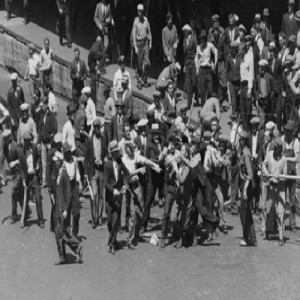
- Podcast Features
-
Monetization
-
Ads Marketplace
Join Ads Marketplace to earn through podcast sponsorships.
-
PodAds
Manage your ads with dynamic ad insertion capability.
-
Apple Podcasts Subscriptions Integration
Monetize with Apple Podcasts Subscriptions via Podbean.
-
Live Streaming
Earn rewards and recurring income from Fan Club membership.
-
Ads Marketplace
- Podbean App
-
Help and Support
-
Help Center
Get the answers and support you need.
-
Podbean Academy
Resources and guides to launch, grow, and monetize podcast.
-
Podbean Blog
Stay updated with the latest podcasting tips and trends.
-
What’s New
Check out our newest and recently released features!
-
Podcasting Smarter
Podcast interviews, best practices, and helpful tips.
-
Help Center
-
Popular Topics
-
How to Start a Podcast
The step-by-step guide to start your own podcast.
-
How to Start a Live Podcast
Create the best live podcast and engage your audience.
-
How to Monetize a Podcast
Tips on making the decision to monetize your podcast.
-
How to Promote Your Podcast
The best ways to get more eyes and ears on your podcast.
-
Podcast Advertising 101
Everything you need to know about podcast advertising.
-
Mobile Podcast Recording Guide
The ultimate guide to recording a podcast on your phone.
-
How to Use Group Recording
Steps to set up and use group recording in the Podbean app.
-
How to Start a Podcast
-
Podcasting
- Podcast Features
-
Monetization
-
Ads Marketplace
Join Ads Marketplace to earn through podcast sponsorships.
-
PodAds
Manage your ads with dynamic ad insertion capability.
-
Apple Podcasts Subscriptions Integration
Monetize with Apple Podcasts Subscriptions via Podbean.
-
Live Streaming
Earn rewards and recurring income from Fan Club membership.
-
Ads Marketplace
- Podbean App
- Advertisers
- Enterprise
- Pricing
-
Resources
-
Help and Support
-
Help Center
Get the answers and support you need.
-
Podbean Academy
Resources and guides to launch, grow, and monetize podcast.
-
Podbean Blog
Stay updated with the latest podcasting tips and trends.
-
What’s New
Check out our newest and recently released features!
-
Podcasting Smarter
Podcast interviews, best practices, and helpful tips.
-
Help Center
-
Popular Topics
-
How to Start a Podcast
The step-by-step guide to start your own podcast.
-
How to Start a Live Podcast
Create the best live podcast and engage your audience.
-
How to Monetize a Podcast
Tips on making the decision to monetize your podcast.
-
How to Promote Your Podcast
The best ways to get more eyes and ears on your podcast.
-
Podcast Advertising 101
Everything you need to know about podcast advertising.
-
Mobile Podcast Recording Guide
The ultimate guide to recording a podcast on your phone.
-
How to Use Group Recording
Steps to set up and use group recording in the Podbean app.
-
How to Start a Podcast
-
Help and Support
- Discover

On this day in labor history, the year was 1934.
That was the day that came to be known as Bloody Friday.
Minneapolis Teamsters had been on strike for three days in their third strike of the year.
The trucking bosses had reneged on their May settlement.
They refused to recognize union organization of inside workers.
In the period between strikes, the union had documented hundreds of cases of discrimination.
Now, 7,000 Teamsters effectively shut down trucking throughout the city. Local 574 leaders established a daily strike bulletin.
The Organizer, as it was called, would serve to guide strikers to victory.
In his book, Revolutionary Teamsters, historian Bryan Palmer notes that the first few days of the strike had been quiet.
Then on this day, police attempted to break the picket lines by running what seemed to be a lone scab truck through the lines.
It was later discovered the truck was moving no merchandise, but was used to draw strikers into a confrontation.
When flying pickets moved to stop the truck, they were ambushed. Police opened fire on unarmed pickets and then sprayed those who attempted to escape with buckshot.
At least 48 were wounded. Striker Henry Ness and Unemployed Council supporter John Belor were killed.
Palmer notes that Ness had been shot point blank in the chest. Doctors pulled 38 slugs from his body.
“His death bed injunction repeated word of mouth among the strikers: “Tell the boys not to fail me now.”
More than 40,000 turned out to pay their respects to the World War I veteran and father of four. Palmer adds that, “Bloody Friday had lasted a matter of minutes.
But its’ meaning would leave a mark on the very fabric of Minneapolis socio-economic relations…”
More Episodes
 2025-02-05
2025-02-05
 2025-02-04
2025-02-04
 2025-02-01
2025-02-01
 2025-01-31
2025-01-31
 2025-01-30
2025-01-30
 2025-01-28
2025-01-28
 2025-01-25
2025-01-25
 2025-01-24
2025-01-24
 2025-01-23
2025-01-23
 2025-01-22
2025-01-22
 2025-01-20
2025-01-20
 2025-01-17
2025-01-17
Create your
podcast in
minutes
- Full-featured podcast site
- Unlimited storage and bandwidth
- Comprehensive podcast stats
- Distribute to Apple Podcasts, Spotify, and more
- Make money with your podcast
It is Free
- Privacy Policy
- Cookie Policy
- Terms of Use
- Consent Preferences
- Copyright © 2015-2025 Podbean.com


